
Beginners’ Sewing Series Part 4 | Lago/Saybrook Tank Sew Along Part A: Choosing Size + Material
Brand new to sewing? Start here. The Sew Busty Beginners’ Sewing Series will be your step-by-step guide to learning garment sewing. Each installment will build upon the last, getting progressively more advanced in skills and techniques. Catch up with the whole series here.
Now that you’ve gathered your tools, taken your measurements, and figured out your sewing cup size, let’s start working with a pattern, shall we?!
For this series, I wanted to start with an easy pattern – one that’s forgiving in fit, that doesn’t include darts or other shaping elements, and one that wouldn’t make you do a full-fledged full bust adjustment.

The patterns we’ll be starting with are Itch to Stitch’s Lago Tank and Cashmerette’s Saybrook Tank. If you’re between a 31-45″ high bust, you can choose the FREE Lago Tank. If you have a high bust of 37-57″, you can choose the Saybrook using the 20% off discount code at the bottom of this post.
(Are you a lucky duck who could choose either? Choose the Lago to learn how to do a “cheater FBA,” or choose the Saybrook for an even simpler experience using Cashmerette’s built-in cup options!)
Now, you may notice that this is one of Itch to Stitch’s few patterns that doesn’t include a full bust piece. (Most of their patterns have cup options!) That’s okay. For the Lago, we’re going to do what I call a “cheater FBA.”
The Saybrook includes cup options, so those using the Saybrook should check out Cashmerette’s size guide to help you choose your size. Then skip to the “Choosing Material” section of this post.
Let’s get planning! Now is the time to get that FREE Sew Busty Project Planner printable out and start taking notes!
Choosing a Size (Lago Only)
But first, we have to figure out your size. Pull out those measurement sheets you printed before!
If you’re using the Saybrook, hop on over to Cashmerette’s size guide to choose your size. Keep reading if you’re making the Lago.

Using Your High Bust
Now, most resources will tell you to choose your pattern based on your full bust. DO NOT DO IT.
This instruction – choosing based on full bust – is for all the B cup babes out there. You, my friend, are likely not a B cup babe, given that you’re reading this blog. So you have to do things a little differently.
For my boobalicious friends, we are going to use your high bust measurement + 2″. (Don’t know what that means? Be sure to read our guide to measurements.)
I’m going to use myself as an example. Here are my measurements:
| High Bust | 35″ |
| Full Bust | 40.5″ |
| Waist | 29″ |
| Hip | 37″ |
Why do we add 2″? Well, because most patterns are drafted for a garment sewing B cup, that is, a 2″ difference between high and full bust. So I’m taking a bet that, for example, where the pattern shows a 35″ full bust, that size will probably have a 33″ high bust, since it’s already accounting for a person who has a 2″ difference there.
So, again: High bust + 2″ = the size you’re going to start with. We’ll call this your pre-FBA bust measure.
For me, this will be 37″ as my pre-FBA bust measure.

My 37″ pre-FBA measure is between a size 6 and a size 8. I generally recommend sizing down when you’re between sizes. On this pattern, if you’re between sizes, you can probably choose between sizing down for a more fitted fit and sizing up for a more relaxed fit.
A look at the rest of the measurements
Looking at the body measurement chart, you might notice that my waist and hip measurements would normally put me at a size 2 in the waist and a size 4 in the hip. That would be a lot of what we call grading: blending between sizes.

However, I want to point your attention toward the finished measurement chart:

You’ll see here that the inches on this finished measurement chart don’t match up with the inches on the body measurement chart. A size 6, for example, is designed for a body with a 36.5″ bust measurement, but the finished garment has a 36″ bust. And that same size is designed for a body with a 30.875″ waist, but has a finished waist of 36.875″.
Why is that? Ease!
Ease is the extra inches that allow a garment to fit correctly and be comfortable. After all, you’re not trying to make a second skin for your body; you’re trying to make a garment to fit on top of it.
Here, we have both negative ease (at the bust) and positive ease (at the waist and hip). Negative ease is when there are fewer inches in the finished garment than the body it’s intended to fit. Positive ease is when there are more inches in the finished garment than the body it’s intended to fit.
At a size 6, the Lago Tank is designed with 1/2″ of negative ease at the bust, 6″ of positive ease at the waist, and 1.625″ of positive ease at the hip.
So what does this mean for what size to choose?
This means, for me, I’m not going to worry about grading down to a size 2 or 4 at the waist and hip. Instead, I’m going to rock that extra positive ease and have a slightly more relaxed fit in the waist and hips than the designer intended.
In other words, I’m going to choose a straight size 6 as my pre-FBA size.
If you are larger at the waist than the measurement given for your pre-FBA size, you will need to grade for the waist. More on that in the TLDR, below.
what about the bewbs?
Okay, you’re here because you have big boobs or a large projected chest. So what about that bust?
Like I mentioned, we’re going to do a “cheater full bust adjustment.” A cheater FBA, or a “boob bubble,” works by giving you a little extra room at the bust, while also taking advantage of negative ease.
Note: I wouldn’t recommend this method for someone who is larger than an F garment cup size – that is, 6″ bigger at the full bust than the high bust. If you have a larger FB/HB difference, in the next post, I’ll include a link to a different – but more difficult – FBA method that you can try.
Negative ease, unlike positive ease, only occurs when you use a stretchy material. By definition, a woven or stable (non-stretchy) knit cannot work with negative ease because it simply will not stretch over the body.
But here, we’re going to use stretchy fabric.
For your cheater FBA, you’re going to choose one size bigger for the bust. So, for me, that means choosing an 8 at the full bust. Looking at the finished measurements again:

As you can see, circled in pink, using an 8 at the full bust will give me a finished measurement of 37.375″. That’s about 3″ smaller than my 40.5″ full bust measurement. Given the stretchy fabric I’m going to recommend we use, I’m comfortable with having 3″ of negative ease at the full bust.
Now, will this method result in a perfect fit? Probably not. But you haven’t been wearing perfectly fitting clothes from the store anyway. And this method will result in a better fit than anything you could buy.
Young padawan, we’ll get to a perfect fit later. Once you can sew a straight line.
Can you give me the TLDR?
Sure thing! You’re going to print two (or three) layers of this pattern, at once, directly on top of each other. One size will be the size that corresponds with your high bust measurement. The other size will be one size larger. If your waist measurement falls on the chart more than one size larger than your pre-FBA size, you will also need to print a third size, which will be the size that corresponds with your waist measurement.
I’m not going to offer instructions on printing the layers or assembling the pattern, because Itch to Stitch already has a fantastic guide. Please take a look!
Choosing material
I’m going to recommend you choose a soft fabric with 4-way stretch for your first project. Cotton lycra, cotton spandex, or lyocell spandex are all good options. I would look for something with a 5-7% spandex, lycra or elastane. (Tip: Did you know that lycra, elastane and spandex are the same thing? Well, now you do! Lycra is just a brand name, like Kleenex is a brand name for specific tissues. And elastane is what our British friends call it. Many experienced sewists don’t know that!)
If you’re in the United States, Joann’s carries a bunch of lyocell spandex that I think is okay quality for your first foray into sewing. If you’re in the UK, check out Sew Anonymous’s selection of jersey fabrics.
For the Lago tank, you’ll need about 1 yard/meter of fabric, regardless of which size you choose. If you’re going to follow along with the Saybrook Tank from Cashmerette (for larger sizes), you’ll need between 1-5/8 and 2-1/8 yards, depending on your size. (You can check the fabric requirements for the Saybrook here.)
Your Homework
This week, you should:
- Get the FREE Lago Tank pattern and download it from Itch to Stitch or, for larger sizes, buy and download the Saybrook Tank from Cashmerette, using code SEWBUSTY20 for 20% off through the end of May 2021!
- Make sure you have all the tools you’ll need for sewing. For this project, in addition to the basics listed on the Tools of the Trade post, you’ll need:
- Purchase 1 yard/meter (or 1-5/8 to 2-1/8 yards for the Cashmerette Saybrook Tank, depending on chosen size)
- Polyester thread to match your fabric (US/UK)
- Print and assemble your pattern (or have it printed it at a copy shop!) by following these instructions on Itch to Stitch’s website.
The next installment of the Lago/Saybrook Tank sew along will take place May 15! We’ll be talking about grading and cutting your fabric!
Some of the links in this post are affiliate links. This means if you click on the link and purchase the item, I will receive an affiliate commission at no extra cost to you. All opinions remain my own.
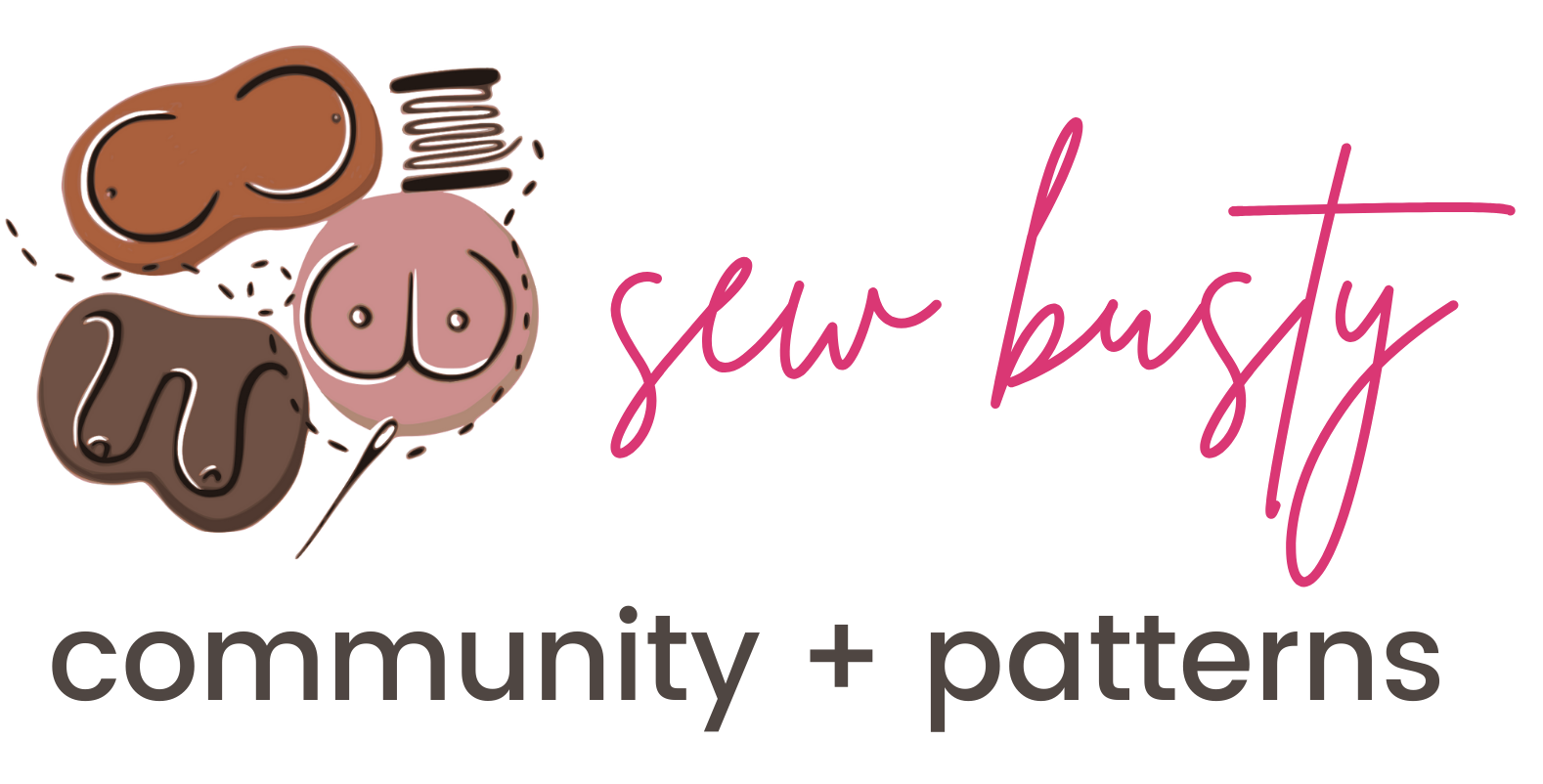
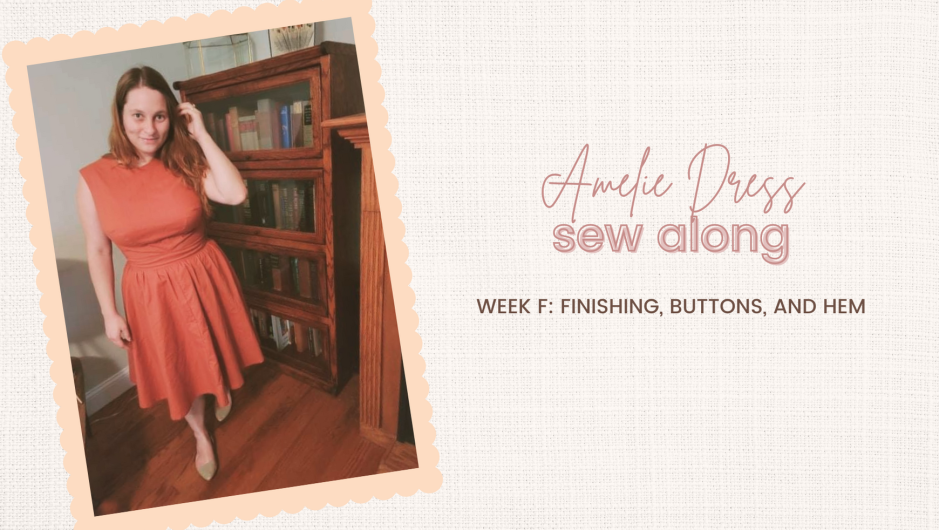
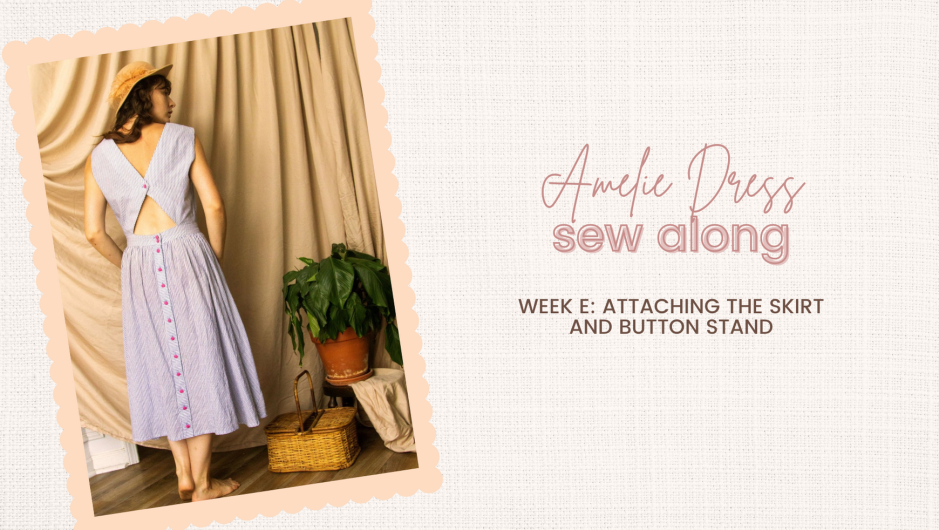
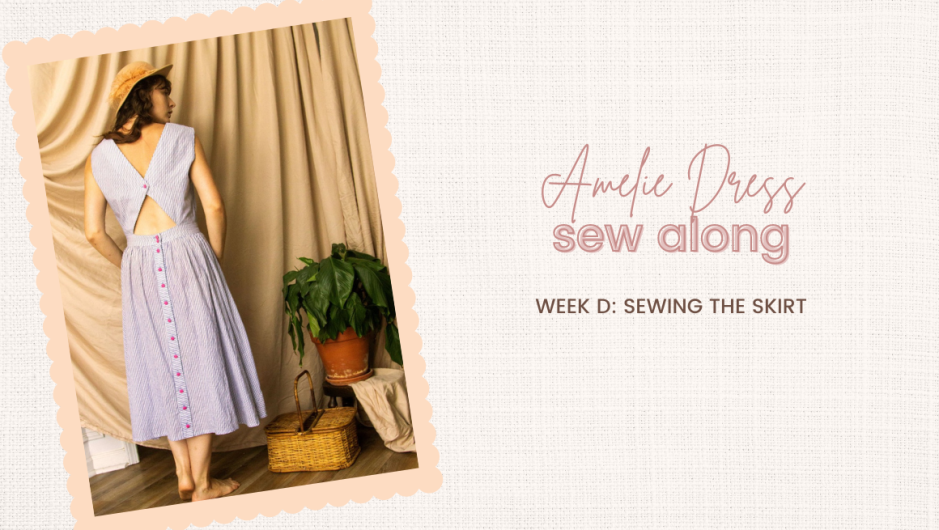
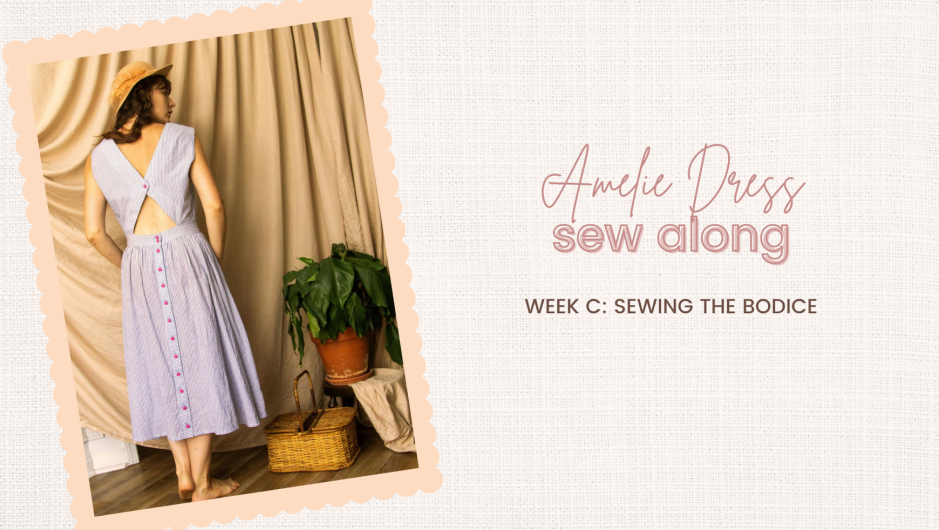
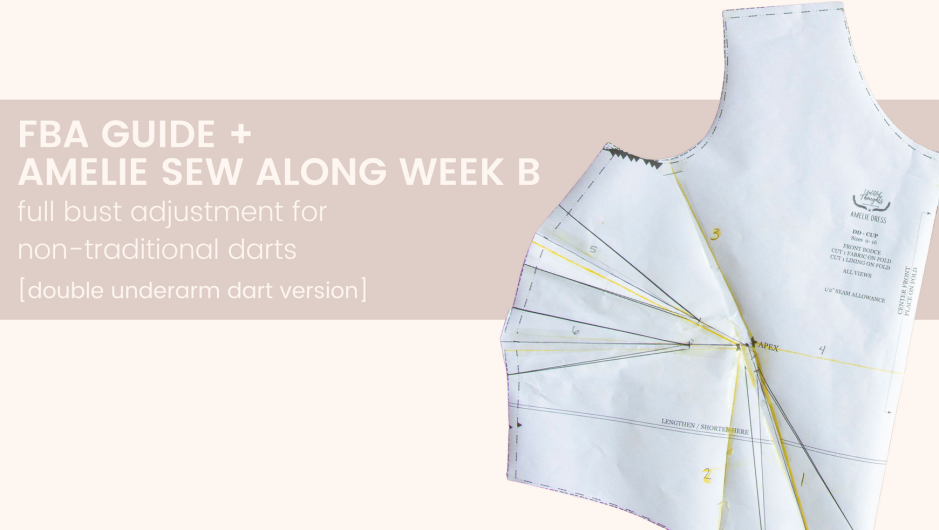
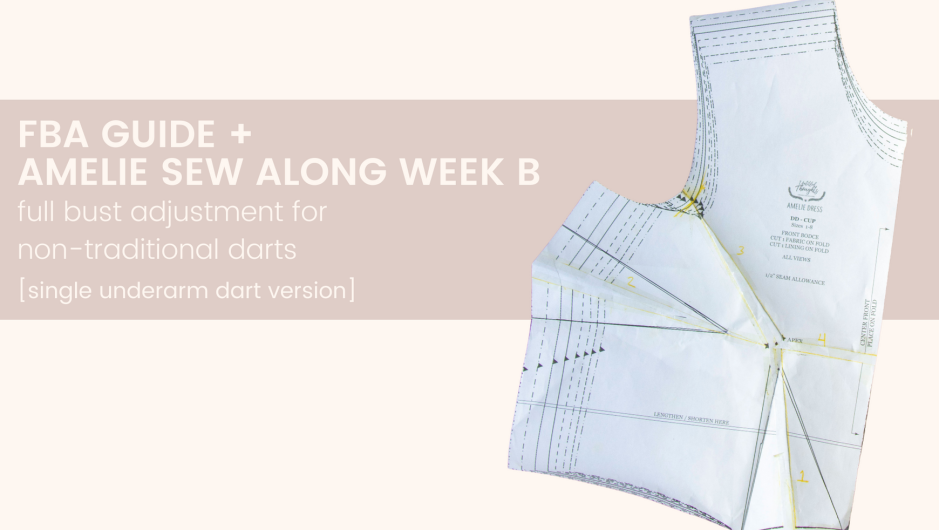
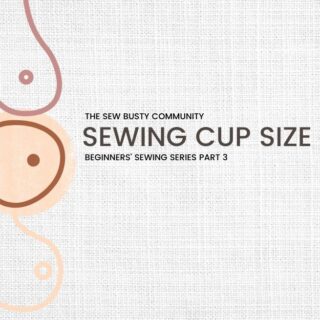
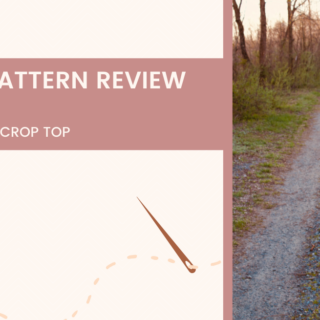
1girl1bkpk
August 14, 2021Such a great guide! I’m so excited to dig into the whole series! Question — where’d you get the awesome matching panties? Are they – gulp – self-drafted?
sewbustycommunity
August 16, 2021Hi hi! They aren’t self-drafted! They’re the Notorious Alice/Tesew Equality pantie pattern 🙂